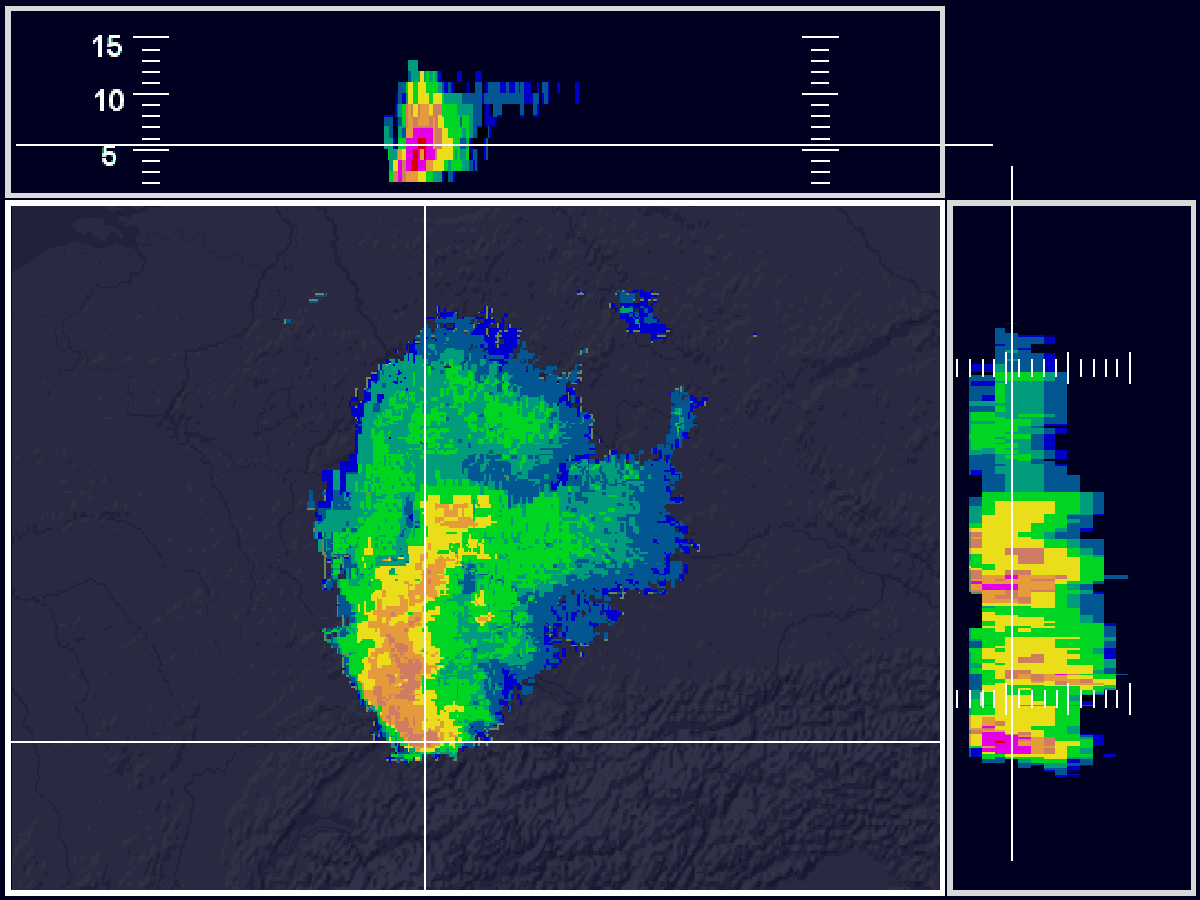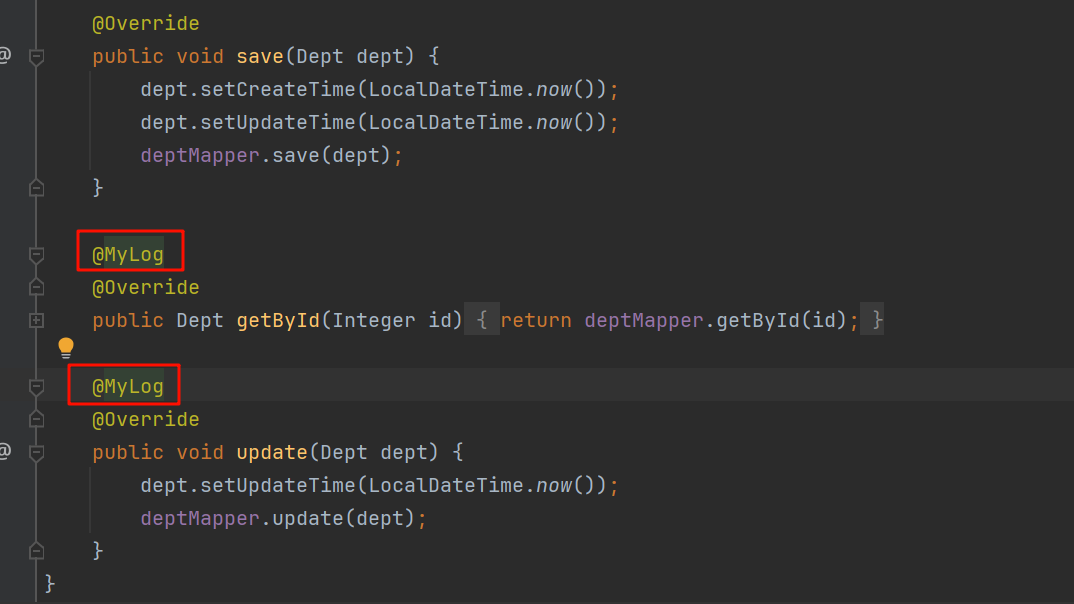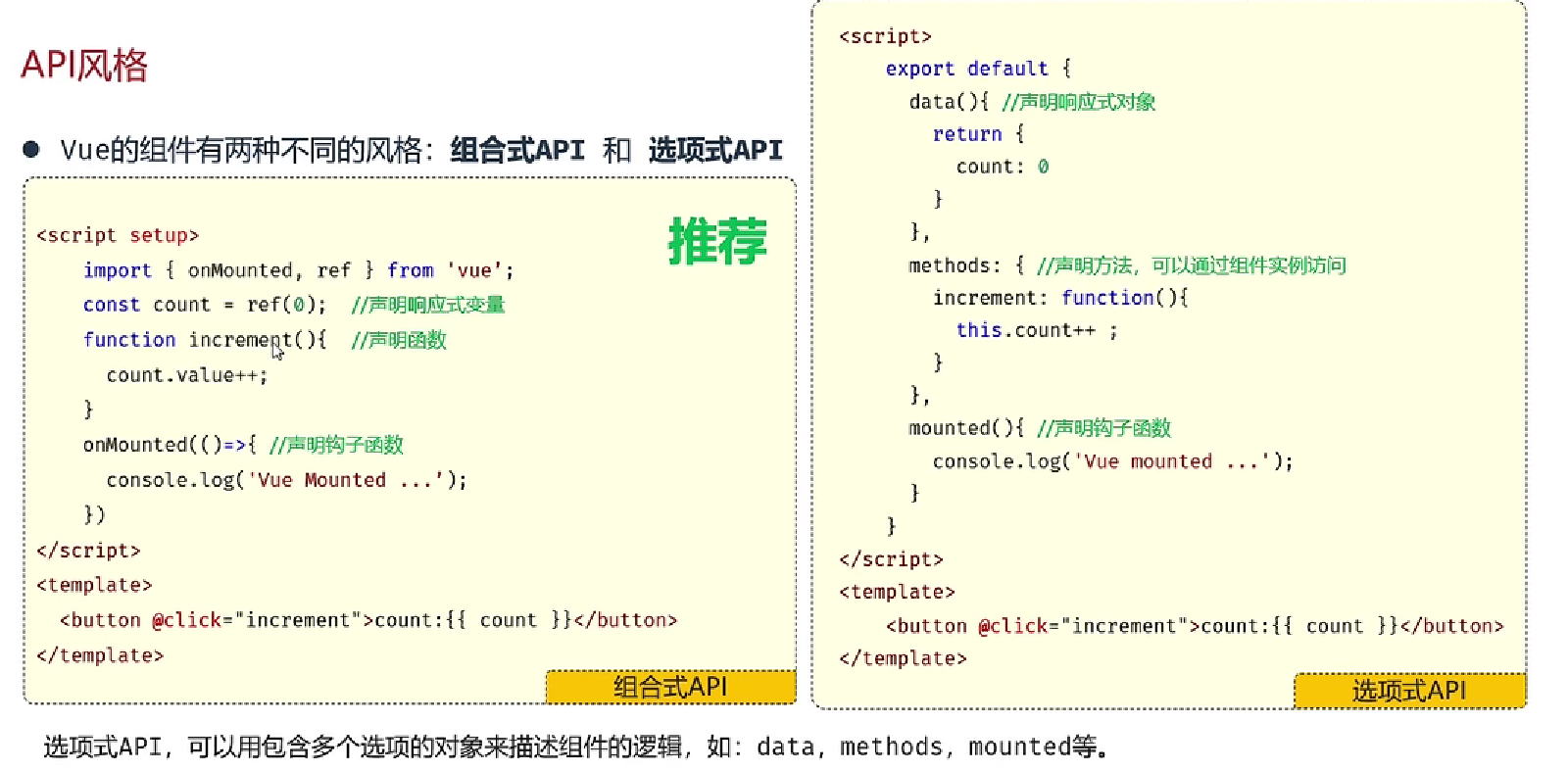参考自https://www.radartutorial.eu/15.weather/wr20.en.html
双偏振雷达
使用双偏振是区分冰雹和雨滴的一种方法。雷达发射和接收线性极化电磁波信号,并在水平和垂直偏振之间快速切换,在单个发射脉冲之间或在脉冲组之间交替。现代双偏振雷达通常同时传输两个偏振方向。
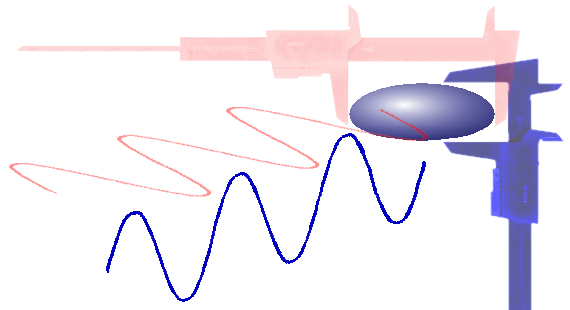
示意图:偏振雷达测量降水粒子的示意图。(水平和垂直方向上,分别测量粒子)
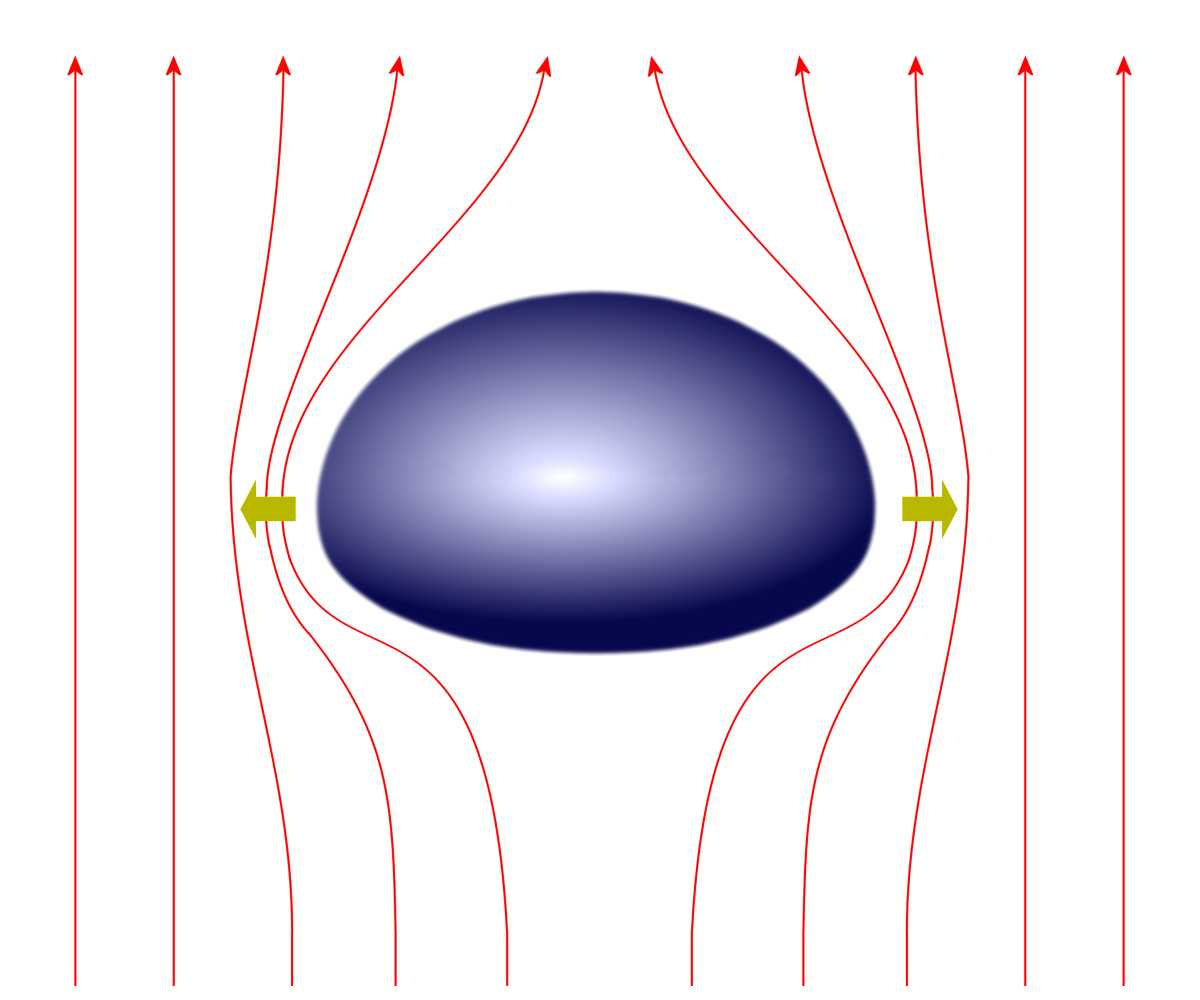
图 2:下落的雨滴取代了空气。在其侧面,流线被压缩并产生拉力(类似于飞机机翼的空气动力学)。这会将水滴拉得更宽。落差越大,这种压缩力就越强,这种力也就越强。
偏振雷达产品
差分反射率Zdr Differential Reflectivity
水平和垂直方向的反射率之差即为差分反射率ZDR。在一个中到大雨中,雨滴在自由下落中,很大很平,形成扁平的球体。这就是水平极化时回波更强的原因。
The two receiving signals are called ZH and ZV and from these, the differential reflectivity ZDR is calculated. In a medium to heavy rain the raindrops are large and flatten during their free fall, forming flattened spheroids. This, in turn, is the cause of a stronger echo when the polarization is horizontal.

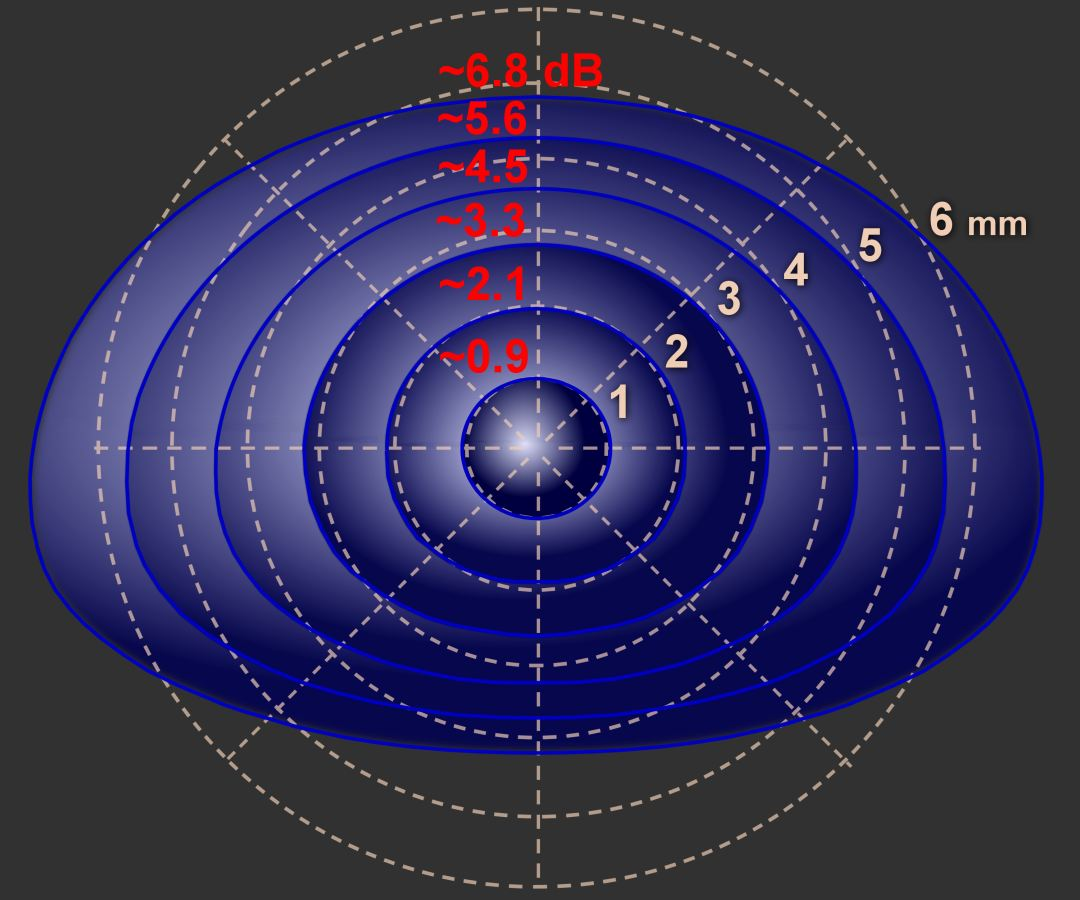
图 3:雨滴越大,形状越扁平,ZDR 越大
固体冰的介电常数仅为水的20%左右,而且其颗粒形状对冰雹的影响比对雨的影响要小得多。冰雹颗粒下落时会翻滚,因此 ZDR 会很小。因此,冰雹是通过高 ZH 值和低 ZDR 值来识别的。如果甚至存在小于 1(或具有负分贝值)的线性 ZDR 值,则这是冰雹的典型信号。 (只有这些才能最终“直立”倒下!)The dielectric constant of solid ice is only about 20% of that of water and the particle shape, therefore, has a much smaller effect in hail than in rain. Hail particles tumble when falling, so ZDR will be small. So hail is identified by a high ZH and low ZDR value. If there are even linear ZDR values smaller than one (or with a negative decibel value), this is a typical sign for hailstones. (Only these can finally fall down “upright”!)
利用偏振雷达,可以在一定程度上测量水滴的大小。坠落时,水凝物会稍微变平。水凝物的高度和宽度之比稍微取决于它们的大小。但更重要的是反射率的大小。每立方米的水量超过一定值时,水滴必须具有一定的尺寸。如果差分反射率与此匹配,则结果是有意义的。With a polarimetric radar, the size of the water droplets can be measured to a certain degree. When falling, the hydrometeors flatten out a little. The ratio of height and width of hydrometeors is slightly dependent on their size. But more important is the size of the reflectivity. Above a certain amount of water per cubic meter, the water drops must have a certain size. If the differential reflectivity matches this, the result is meaningful.
线性退极化比Linear depolarization ratio
在水平极化辐射的情况下,垂直极化通道的接收器工作。它接收变成垂直平面的水平偏振辐射部分(“去偏振”)。水平辐射和垂直偏振接收的反射率与纯水平偏振传输和接收的反射率的对数比称为线性去偏振比(LDR)。
In the case of radiating in horizontal polarization, nevertheless, the receiver of the vertically polarized channel works. It receives the part of the horizontally polarized radiation turned into the vertical plane (“depolarized”). The logarithmic ratio of reflectivity for horizontal radiation and vertically polarized reception to that for purely horizontally polarized transmission and reception is called Linear Depolarization Ratio (LDR).
对于球形粒子,LDR 理论上会接近负无穷大,但实际上只会达到低至 -40 dB 的值。For spherical particles, LDR will theoretically approach to negative infinity, but in practice will only reach values down to −40 dB.
不幸的是,据我所知,没有双偏振雷达可以直接测量冰雹粒径。它只能根据差分反射率 ZDR 以及可测量的水平和垂直偏振接收信号之间的相位差来确定它是冰雹。通过比较迄今为止用该雷达测量的反射率以及迄今为止真实降水类型下降的经验,雷达可以确定是否考虑有冰雹!无论是许多小霰子还是少量大冰雹,雷达都无法测量。Unfortunately, no dual polarized radar known to me can directly measure a hail particle size. It can only determine that it is hail from the differential reflectivity ZDR and the measurable phase differences between the horizontally and vertically polarized received signal. From the comparison of the reflectivities measured so far with exactly this radar and the experiences made so far over then real precipitation types have fallen, the radar can determine whether it concerns hail or not! Whether it is then many small graupels or few large hailstones, the radar cannot measure.
差分相位Differential Phase (φDP)
φDP 是脉冲体积中水平和垂直偏振脉冲的 2 路衰减差异的度量。它定义为:
φDP = φHH − φVV (2)
其中: φHH、φVV 是雷达和分辨率体积之间总往返路程的累积差分相移。
The differential phase φDP is a measure of the difference in 2-way attenuation for the horizontally and vertically polarized pulses in a pulse volume. It is defined as:
Where: φHH, φVV are the cumulative differential phase shift for the total round trip between radar and resolution volume.
当水平和垂直偏振雷达脉冲通过给定目标时,两个脉冲不仅会衰减,甚至会减慢,从而改变每个脉冲的相移。在非球形水凝物中,水平偏振波的路径比垂直偏振波的路径稍长。差分相位 φDP 显示水平和垂直偏振脉冲之间的相位差。这提供了有关雷达目标的形状和密度的信息。When the horizontally and vertically polarized radar pulses pass a given target, both pulses are not only attenuated but even slowed down, changing the phase shift of each pulse. Within nonspherical hydrometeors, the path for the horizontally polarized wave is slightly longer than for the vertically polarized wave. The differential phase φDP shows the difference in phase between the horizontally and vertically polarized pulses. This provides information about the shape and density of radar targets.
差分相位 φDP 用于区分非气象回波和气象回波。为此,我们计算差分相位的均方根误差。大的偏差值显示不是体积目标,而是点目标。
The differential phase φDP is used to distinguish between non-meteorological and meteorological echoes. For this purpose, we calculate the root of the mean square deviation of the differential phase. Large deviations are then not volume targets but point targets.
差分传播相移率 Kdp,Specific Differential Phase (KDP)
然而,φDP 的值沿着每个径向(即每个脉冲周期内)累积,这使得解释变得困难。因此,计算出一个特定的差分相位,它描述了 φDP 沿传播路径的变化。 KDP 也可以描述为相位梯度:
However, the values of φDP are accumulated along each radial, i.e., within each pulse period, which makes interpretation difficult. Therefore, a specific differential phase is calculated, which describes the change of φDP along the propagation path. KDP can also be described as a gradient of phase:
 (3)
(3)
与 ZDR 一样,KDP 也取决于水凝物的粒径及其形状和方向。因此,它是区分雨滴与冰雹和雨夹雪的另一个有价值的量。
Like ZDR, KDP also depends on the particle size of hydrometeors and their shape and orientation. It is thus another valuable quantity to distinguish raindrops from hail and sleet.
互相关系数Co-polar Cross-correlation Coefficient (ρHV)
互相关系数 ρHV 是水平和垂直极化回波信号之间的统计相关性。它是对给定分辨率细胞中水汽凝结形式多样性的衡量,并且可以很好地指示存在混合降水类型(例如雨和雪)的区域。The co-polar cross-correlation coefficient ρHV is a statistical correlation between the horizontally and vertically polarized echo signals. It is a measure of the diversity of hydrometeor forms in a given resolution cell and can be a good indicator of areas where there is a mixture of precipitation types, such as from rain and snow.
使用两个或多个脉冲周期为分辨率单元测量的散射振幅的平均值(SHH、SVV)用于计算。
ρHV 计算如下:
The mean values of the scattering amplitudes (SHH, SVV) measured for the resolution cell from two or more pulse periods are used for the calculation.
ρHV is calculated as follows:
 (4)
(4)

